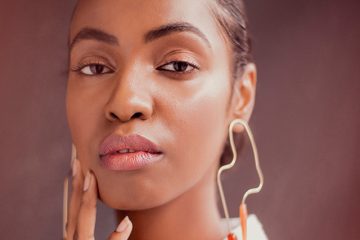The Newbie's Overview to Product Photography
If a image deserves a thousand words, a spectacular product photo deserves a thousand internet site visits. Although I do not have data to support that statement (yet), product photography can be exceptionally valuable to your ecommerce internet site technique.
To reach your target market members that like acquiring online, you likewise need to provide your audience clear, appealing images of your products.
However product photography isn't as easy as directing as well as firing. Even the most fundamental products need the appropriate tools, lights, as well as space to produce gorgeous images that sell shoppers right from the purchase web page.
6 Product Photography Tips (and Instances) for Taking Photo That Sell
Here are the tips, instances, and supplies you'll need to successfully picture as well as market your products in such a way that makes your visitors as well as leads want to convert.
1. Do not hesitate to utilize your smart device's cam.
This is the part where I'm expected to encourage you to invest in a high-end, 50-megapixel (MP) video camera with a 100-millimeter screw-on lens. Yet I'm not going to do that.

If you currently own a electronic camera that fits this summary, make the most of it. But for many sorts of products, it's completely acceptable to shoot product photos on a smart device.
Newer mobile phones boast effective video camera lenses and setups that permit you to enhance your shots for the various sorts of light as well as settings you could fire in.
If you require more persuading, simply take a look at Apple's Shot On An apple iphone project and also the photos that have arised from it for many years such as this one:
2. Fire from a tripod for photo uniformity.
Prior to discussing tripods, I'm bound to start with a cardinal guideline: Don't prop your phone versus something sturdy to intend your lens toward the subject.

It's simply too very easy for this makeshift setup to slide around during the shoot as well as create disparities in your pictures' appearance. If you rest your camera on, claim, a pile of publications, simply be sure this plan doesn't change throughout the shoot.
There's no damage in holding your electronic camera on your own when firing just a couple of product pictures for your ecommerce web site. But as your company expands, and you take a lot more photos of even more products, it can be tough to standardize the product's orientation in each photo when firing handheld.
To make certain consistency across your products, you'll require a tripod. As well as luckily, purchasing one isn't always the large, industrial-sized financial investment it made use of to be.
Right here are two types of tripods to take into consideration.
Standard vs. Adaptable
This is a practice tripod-- there are conventional tripods readily available for both cameras and mobile phones.
A adaptable tripod can be manipulated in a number of methods. You can bend its legs as well as put it on various surfaces to get the angle you require.
Mobile Grasp
There's typically a screw on the top of your tripod which connects to your electronic camera to hold it in place. The underside of many professional-grade cameras has a screw hole just for this objective, however smartphones can make use of the adhering to adapter:
The adapter grasps the sides of your smartphone and can screw right into either type of tripod, enabling you to run the electronic camera manages with the phone screen dealing with exterior as well as toward you.
As soon as you identify which mount you'll need, establish it up before your product, as well as consider putting three items of tape on the ground to mark where you 'd like to keep each leg of your tripod over the course of the shoot.
3. Pick all-natural light or man-made light.
Never ever undervalue exactly how specific kinds of light can enhance (or hinder) your product photography. Remember, customers obtain the most effective look at an product personally, where they can see everything they require to prior to buying. The right illumination arrangement helps you reveal those vital decision-making product functions when all website site visitors have to go on is a photo.
A single lighting configuration might not benefit every product-- a illumination plan that helps some items could compromise the appearance of others.
There are 2 types of light you can choose as your main light: natural as well as fabricated light.
Natural Light
Natural light describes sunshine-- basic as that. It's also referred to as "soft light" since the sunlight casts a larger, softer series of light than, say, a lamp shining directly on the product. Ecommerce product shots prosper in natural light if:
The product is shot outside or indicated to be utilized outside.
The product is made use of by, endured, or shot with a individual ( individuals often tend to look far better in all-natural light).
You're attempting to stress the product's surroundings, rather than details attributes of the product.
Right here's an example of a shot making use campaign photography gold coast of all-natural light:
Man-made Light
Man-made light consists of candles, fire, and extra generally, light bulbs. It's additionally described as "hard light" due to the fact that it generates a smaller however extra concentrated light surface area. This kind of light satisfies products with physical information that require to be highlighted to impress an on the internet buyer.
As a general policy, stay with just one sort of light per photo-- all-natural or artificial. Adding natural light to an artificially lit photo can soften a product that's implied to look sharp, and also including artificial light to a naturally lit photo can sharpen a product that's meant to look soft. You do not want to enter your very own method.
4. Fill or jump your light to soften shadows.
Whether you make use of natural light or man-made light, you'll need to decrease the darkness that any kind of possible difficult light casts on the opposite end of a product.
There are three methods to do this:
Fill Light
Include one more, less-intense light to supplement your primary light. This extra light is called your fill light as well as is made use of as a counterbalance to soften the natural darkness your major light produces behind an item.
To do this, put your fill light contrary your primary light so your product rests between both source of lights.
Flashbulb Bounce Card
A bounce card, or reflector card, is a small card that "reflects" or " jumps" the major light back onto the surface area underneath your product to decrease shadows.
Some bounce cards affix to the flashbulb of a professional electronic camera lens to diffuse the light from the camera's flash. This card sprays a softer light onto the topic from over your collection-- rather than right at it-- so you don't have long shadows trail behind the things you're shooting.
Standalone Bounce Card
If you're shooting from a smartphone, a flashbulb bounce card isn't an choice, considering that you don't have a physical flash you can connect it to. Rather, make your very own standalone bounce card positioned opposite your primary light source.
For beginners to product photography, this bounce card can efficiently change your fill light, which counters the tough light from the electronic camera flash or lamp that's facing toward the front of your product.
5. Make use of a sweep or picture mode to emphasize the product.
There isn't one right means to position your product, lights, as well as jump cards-- they can change considerably depending upon your background. However do not select a history based upon what's most convenient to develop. Histories must resemble how you desire your purchasers to view your product when seeing it online.
Consider first whether you 'd such as a white background or a more vibrant, real-world history. There's an easy method to accomplish every one.
White History: Move
For white histories, it's not as simple as establishing a table versus white drywall. Also smartphone electronic cameras can get little imperfections on a white wall that you would not discover with the naked eye. To catch a best white history without any edges or blemishes, make use of a move.
A sweep is a huge flexible sheet of paper, whose lower acts as the surface area beneath your product and then contours up into a white wall behind the product.
On video camera, the move's curve is unseen, highlighting vital product details as well as permitting the product to own all of a site visitor's attention.
Real-World History: Portrait Mode
Dynamic, real-world histories are really attractive when capturing products that have a particular use or are being modeled by a individual-- as you saw aware of the briefcase previously in this guide.
However, it's very easy for a real-world history to steal the focus of the photo, making it unclear which thing in the photo you're really marketing.
Give your product deepness and focus with portrait mode, a photo setup on the majority of professional cameras, as well as likewise readily available on lots of new mobile phones. This setup blurs the background so the context of the product is clear yet not contending versus the product itself.
Below is a extremely incredible photo of a HubSpot pen absorbed picture setting on a Google Pixel 2 (I took this image myself). You can inform the pen sits on a desk with a computer behind it, but the pen is still the centerpiece for audiences:
6. Fire a variety of images.
My last ecommerce photography pointer to you is to not quit at one photo per product. Just as your consumers look, hold, utilize, as well as also try out merchandise in a shop, your web site should shoot a variety of photos to imitate this extremely experience.
If you're shooting clothing, for example, capture the garment of apparel alone-- that is, expanded on a white surface area-- in addition to on a mannequin whose shade contrasts the shade of the product.

After that, for extra photos, have the clothes modeled on a individual, allowing you to take photos of the product from the person's various postures and also angles.
Product Photography Set-Up
Next, allow's summarize what we simply got-- below's a list of quick product photography set up tips that you can refer to as well as share on your group:
• Choose a cam-- whether that means utilizing your smartphone.
• Get a tripod that helps your cam of selection.
• Choose natural or fabricated illumination-- think of which option is best for your product and also setting.
• Determine whether you'll fill or jump light.
• Select move or picture setting.
• Take several different pictures to use your visitors selection.
Get Started With Your Product Photography
Do not feel obligated to invest in every pointer and piece of equipment at the same time. Apply these product photography ideas progressively to see what makes your store look one of the most presentable, as well as alter your technique as your photography chops get better.